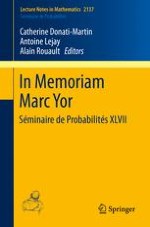2015 | OriginalPaper | Chapter
The Joint Law of the Extrema, Final Value and Signature of a Stopped Random Walk
Authors : Moritz Duembgen, L. C. G. Rogers
Published in: In Memoriam Marc Yor - Séminaire de Probabilités XLVII
Publisher: Springer International Publishing
Activate our intelligent search to find suitable subject content or patents.
Select sections of text to find matching patents with Artificial Intelligence. powered by
Select sections of text to find additional relevant content using AI-assisted search. powered by
